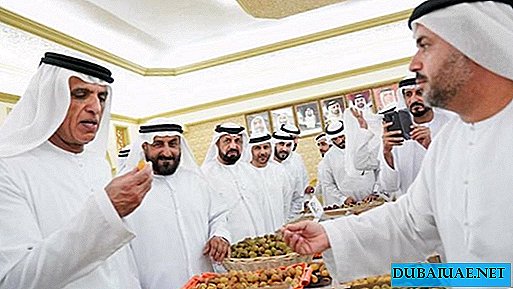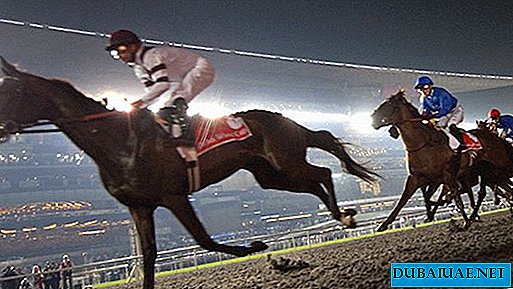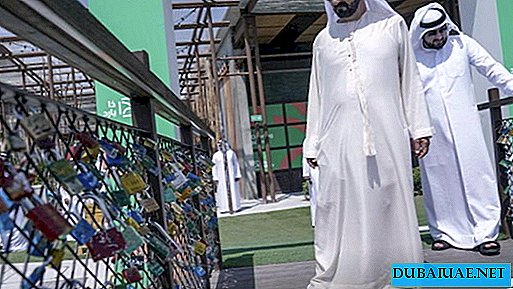Text and photos: Elena Olkhovskaya
Numerous domes, heavy bridges, stately castles, cobblestone streets, hundreds of fountains and a riot of greenery. City of Dresden. It is called the residence of the Saxon kings and "Florence on the Elbe." It is the birthplace of the world-famous Saxon porcelain, which is produced on the outskirts of Meissen. Within the walls of his art gallery is stored the Sistine Madonna painted by the great Raphael, and the Frauenkirche church proudly rises again in the ideal center of the city ...
Hotel QF, Neumarkt and "Welcome Mr. President!"
 If you want to get to know some European city closer, it is better to settle in its historical center, then almost all the main attractions will be within walking distance from your hotel, and there will be no need to travel by taxi. Most European cities, by the way, offer much more opportunities for hiking than for traveling with the breeze. Firstly, narrow streets contribute to this, and secondly, you can’t especially speed up the paving stones. Yes, and is it worth it. A calm lifestyle, many cozy street cafes and tiny shops, friendly passers-by and numerous ancient monuments invite you for a leisurely and informative walk around the city.
If you want to get to know some European city closer, it is better to settle in its historical center, then almost all the main attractions will be within walking distance from your hotel, and there will be no need to travel by taxi. Most European cities, by the way, offer much more opportunities for hiking than for traveling with the breeze. Firstly, narrow streets contribute to this, and secondly, you can’t especially speed up the paving stones. Yes, and is it worth it. A calm lifestyle, many cozy street cafes and tiny shops, friendly passers-by and numerous ancient monuments invite you for a leisurely and informative walk around the city.
The opportunity to live a couple of days in the historic center of Dresden looks completely different when you realize that it was completely destroyed during the bombing in February 1945. Remember the famous Allied meeting on the Elbe? Then the guys who fought against the Nazis tried, because the victory over the Nazis was a matter of some months ... Today's beauty of magnificent Baroque buildings is nothing but the painstaking work of restorers and hundreds of builders who recreated the city literally from the ashes. Looking at the beautiful Frauenkirche church (Church of Our Lady), it is impossible to believe that from 1945 until 1993 (!), Only its ruins stuck out in the center of the square, left by the GDR government as a warning to posterity, as a monument of sorrow and a tribute to civilians of the city who died during the bombing . But it is precisely in it, once, they say, that the organ just established was mastered by Johann Sebastian Bach himself.
Only after the Berlin Wall fell, did the Dresden set about rebuilding the Frauenkirche and other historical monuments and buildings created in the 17th century by the most beloved king of independent Saxony, Augustus I the Strong, and, subsequently, his descendants, who upset and decorated the city. And now on the "body" of the Frauenkirche church, you can see pieces of the facade that have survived after the bombing and the reign of the GDR Communist Party, appearing in dark spots on the light sand background of the new structures.
The area around the church (by the way, Lutheran, as more than 80% of the inhabitants of Saxony are Lutherans), built up by remodelers, today is called Neumarkt (New Market) and is located on the left bank of the Elbe. Directly on it stands the QF hotel, in which I was fortunate enough to stay. New, clean, very comfortable. But the main thing - in my room I had a huge panoramic window over the entire wall, from which, as you could see, the square itself, and the nearby streets, and even a monument of the socialist era - a huge, glass-concrete Palace of Culture, exactly repeating the same examples of Soviet urban planning, decorating the main squares of Russian cities. The name of my hotel was told to me by a local concierge, explaining what QF stands for. It stands for everything ingenious, simply - Quarter Frauenkirche (Quarter Frauenkirche). It seems that everything here moves and is named around this church and in honor of it. Ah no! As a lyrical digression, I notice the extensions “Welcome, Mr. President!” Hanging on the facades of all the buildings around the square. It turns out that a week before my arrival, Dresden was honored by Barack Obama himself, the newly elected US President, who visited the capital city on the Elbe along with German Chancellor Angela Merkel. It’s a pity that we missed each other! But walking along this cobblestone square suddenly became much more pleasant ...
Panometer and blackening sandstone
I must say right away that a trip to the residence of the Saxon kings was organized for a group of Middle Eastern journalists from leading publications by the watch company A. Lange & Soehne. Therefore, one could only dream of visiting museums and art galleries of Dresden. The main purpose of the tour was a trip to a watch manufactory, but it’s great that the organizers of the event settled us in the very center of the city, a two-minute walk from the beautiful Elba promenade, which overlooks the opposite high coast. It is decorated with numerous royal palaces and summer residences. By the way, they threatened to tell us more about them during a boat trip along the river, but here, for good luck, there was such a downpour that I had to refuse to inspect these city sights, even under umbrellas. But we knew that a blessing in disguise! And for sure. We were shown Dresden, but what! ...
 There is a unique building in the city called Panometer! Sounds funny like a thermometer. But in fact, in this huge cylindrical concrete bunker, which used to act as a gas storage, you can now see Dresden of the XVII century! Through the efforts of the talented artist Azizi Amazonian and his studio, the delightful illusion of a full panorama of the city of the 17th century, opening from the bell tower of his highest cathedral, makes you believe in the reality of what is happening. You see the city waking up and you hear the knock of hammers, the laughter of children, the meow of cats and the splashing of water in the Elbe. Then a day comes into the city, dusk comes after it, and night falls, filled with the sighs of invisible birds and the chirp of cicadas. It seems that a cavalcade of Augustus the Strong himself is about to appear from the gates of the palace. The quality of light and sound effects, coupled with the tactile sensation of touching the warm stone fencing of the dome of the cathedral, heated by the rays of the sun, which, of course, is also created artificially, complement the experience. Quoting the classic: "Ah, it is easy to deceive me, I myself am glad to be deceived!". We are still interesting people. We know for sure that this is the trick, but we believe in it, like children. Today the attraction, or even not, the illusion of the Panometer can be visited not only in Dresden, but also in the eternal city of Rome, and even in Leipzig, neighboring with Dresden. Yes, photographing inside the Panometer is strictly prohibited. And rightly so, why solve the trick, which is already good ... Another distinctive feature of Dresden is the sandstone, from which all the buildings are built here, with the possible exception of panel high-rise buildings, of which there are many in our country. True, in Dresden these “monuments of socialist architecture” for some reason look very well-groomed, smile at your facades freshly painted in different colors and wink neatly, and most importantly, equally glazed balconies with standard (again) fabric blinds that turn balconies into cute ones in summer landscaped terraces. So, distracted ...
There is a unique building in the city called Panometer! Sounds funny like a thermometer. But in fact, in this huge cylindrical concrete bunker, which used to act as a gas storage, you can now see Dresden of the XVII century! Through the efforts of the talented artist Azizi Amazonian and his studio, the delightful illusion of a full panorama of the city of the 17th century, opening from the bell tower of his highest cathedral, makes you believe in the reality of what is happening. You see the city waking up and you hear the knock of hammers, the laughter of children, the meow of cats and the splashing of water in the Elbe. Then a day comes into the city, dusk comes after it, and night falls, filled with the sighs of invisible birds and the chirp of cicadas. It seems that a cavalcade of Augustus the Strong himself is about to appear from the gates of the palace. The quality of light and sound effects, coupled with the tactile sensation of touching the warm stone fencing of the dome of the cathedral, heated by the rays of the sun, which, of course, is also created artificially, complement the experience. Quoting the classic: "Ah, it is easy to deceive me, I myself am glad to be deceived!". We are still interesting people. We know for sure that this is the trick, but we believe in it, like children. Today the attraction, or even not, the illusion of the Panometer can be visited not only in Dresden, but also in the eternal city of Rome, and even in Leipzig, neighboring with Dresden. Yes, photographing inside the Panometer is strictly prohibited. And rightly so, why solve the trick, which is already good ... Another distinctive feature of Dresden is the sandstone, from which all the buildings are built here, with the possible exception of panel high-rise buildings, of which there are many in our country. True, in Dresden these “monuments of socialist architecture” for some reason look very well-groomed, smile at your facades freshly painted in different colors and wink neatly, and most importantly, equally glazed balconies with standard (again) fabric blinds that turn balconies into cute ones in summer landscaped terraces. So, distracted ...
So, sandstone has one amazing property. Under the influence of water (something, and there is enough rainfall here) and the local climate, it is covered outside with a thin black layer of “stone patina”. It is harder in composition than the sandstone itself, therefore it protects buildings and structures, as well as the numerous sculptures, flowerpots, garlands, columns and bas-reliefs decorating them from destruction. True, the appearance of buildings turning from sunny yellow into something dark and heavy creates a slightly depressing impression. Yes, and sculptures of darkened Baroque nymphs and angels cannot be discerned against the lush greenery of city gardens and parks. Today, local authorities are gradually clearing patina of ancient buildings and sculptural complexes and covering them with a special composition similar in color to natural sandstone. And who knows, maybe very soon Dresden will again look like it was conceived by King August I the Strong, who created the “Baroque city” on the banks of the Elbe. But even in the restored form, palaces, churches, museums and fountains are unlikely to gain the same splendor as the “golden” equestrian statue of Augustus the Strong himself, reflecting millions of sunbeams in those days when there are no clouds over the city ...
Tuna, wine and some mangoes
Tell me what you eat and I will say who you are. In East Germany there is no such cult of food, as, for example, in the countries of the Middle East. It is not customary to spend hours at the meal, it does not flow into smoking hookah and contemplation of belly dancing. The Germans are punctual, neat and very thorough people. Saxony's residents favor hearty and unpretentious meat dishes, lots of stewed vegetables, good cheeses and sausages, and, of course, delicious homemade cakes - muffins, berry pies, strudel and chocolate cakes. The most famous Saxon cupcake is the Dresden Stolen or Dresden Monster - a sweet pastry with almonds, raisins, candied fruits and spices, sprinkled with plenty of icing sugar. It is traditionally baked by Christmas, and, by the way, they say that the "monster" has time to gain taste and mature, it needs to be baked three weeks before the holy holiday. They also say that with proper storage this confectionery masterpiece does not become stale for a month, two, or even more. That’s why no Saxon confectioner who respects himself will reveal the secret of making a real “monster,” but you can try the signature “Dresden adit” in many cafes. It is a big misconception that all Germans love beer and drink it for any occasion. Yes, they love and brew in all small pubs (gashtas) scattered around towns and villages. But, besides this, the Elbe Valley has its own vineyards, so the Saxons produce very decent quality wines. Especially good are the local Rieslings with a bright, refreshing fruity taste. They are no worse than the Rhine. Local wines are served in all restaurants and can be purchased at any supermarket.
Now about the tuna. No, don’t think, he’s not found in the Elbe. We had a chance to try it in a wonderful gourmet restaurant with the cheerful name Bean & Beluga ("Grain and Beluga"). What does cereal and, moreover, sturgeon, have to do with this, I have not been able to find out. But in order to have dinner, all of our honest company, headed by the chief executive officer of the watch company A. Lange & Soehne Fabian Krone, who invited us to his favorite restaurant, first had to work in the kitchen, and this dinner (okay, not all, but quite a significant part of it) to cook with your own hands. Each participant was given branded aprons, knives and cutting boards, and we, under the guidance of chef Stefan, began to cut, crumble and clean. Men got the honorable duty to roll pieces of raw tuna fillet in spices and fry the resulting semi-finished products in a pan, girls to pluck the greens from the stems and decorate the finished snacks with it. It’s for me to peel a ripe mango for dessert with a special vegetable peeler. I won’t tell you how I did it, I’ll just say that after suffering for half an hour, I announced to my colleagues that there would probably be no dessert today. But then, the mango suddenly decided to succumb to me, and, with honor, having fulfilled my mission of making dessert, I got involved in an even more interesting lesson - cooking ravioli. Funny too! Imagine a picture - a brand manager of a solid watch brand, I stuck out tongue, spreading an egg mixture with a layer of dough for these Italian counterparts of dumplings, I squeeze a poisonous green filling from potatoes and spinach onto another layer from a thick bag. Then these layers of dough are stacked on top of each other, and A.Lange & Soehne's press relations manager carefully cuts the ravioli out of them with a mold. In six hands, with grief in half, we stuck these things. I’ll tell you honestly, haute cuisine is really creativity plus a solid educational base. And then some people think that the process of preparing food for an intellectual load is a little easier than pulling a rope. There it was! In general, for our labors we were awarded a magnificent dinner, excellent local wine and a wonderful conversation, which now and then slipped into ridiculous situations from the culinary master class that had just ended. It remains to say, thanks to everyone! And for the invitation to Bean & Beluga, and for the excellent entertainment program.
tongue, spreading an egg mixture with a layer of dough for these Italian counterparts of dumplings, I squeeze a poisonous green filling from potatoes and spinach onto another layer from a thick bag. Then these layers of dough are stacked on top of each other, and A.Lange & Soehne's press relations manager carefully cuts the ravioli out of them with a mold. In six hands, with grief in half, we stuck these things. I’ll tell you honestly, haute cuisine is really creativity plus a solid educational base. And then some people think that the process of preparing food for an intellectual load is a little easier than pulling a rope. There it was! In general, for our labors we were awarded a magnificent dinner, excellent local wine and a wonderful conversation, which now and then slipped into ridiculous situations from the culinary master class that had just ended. It remains to say, thanks to everyone! And for the invitation to Bean & Beluga, and for the excellent entertainment program.
Old-old tale ...
All good things come to an end. Our short trip to Dresden also ended. Much remains unseen, unexplored and untested. But who said you cannot return to hospitable Saxony again? After all, you still need to look into the Meissen porcelain store, walk through the old and new urban areas, eat a delicious hot dog with sweet German mustard, bought right there in a tray on the street. So what, what fast food? But what a! Yes, and just chat with local people, many of whom perfectly understand and speak Russian. And you know what else Dresden just conquered me with? They do not scold or rewrite their history, they simply tidy up everything that they inherited from the Saxon kings (a gallery of heraldic portraits of monarchs painted on porcelain tiles made in Meissen can be seen here, on one of the historical buildings, miraculously preserved during the bombing of 1945); restore the monuments destroyed by the Nazis, and it does not matter whether it is a church or palaces; they maintain in order the residential areas left over from the GDR (in panel high-rise buildings, by the way, people with average incomes still enjoy living and do not consider this shameful). Everything is saturated with love and beauty. Here the old, old tale lives on, thanks to new people born on the banks of the Elbe ...












